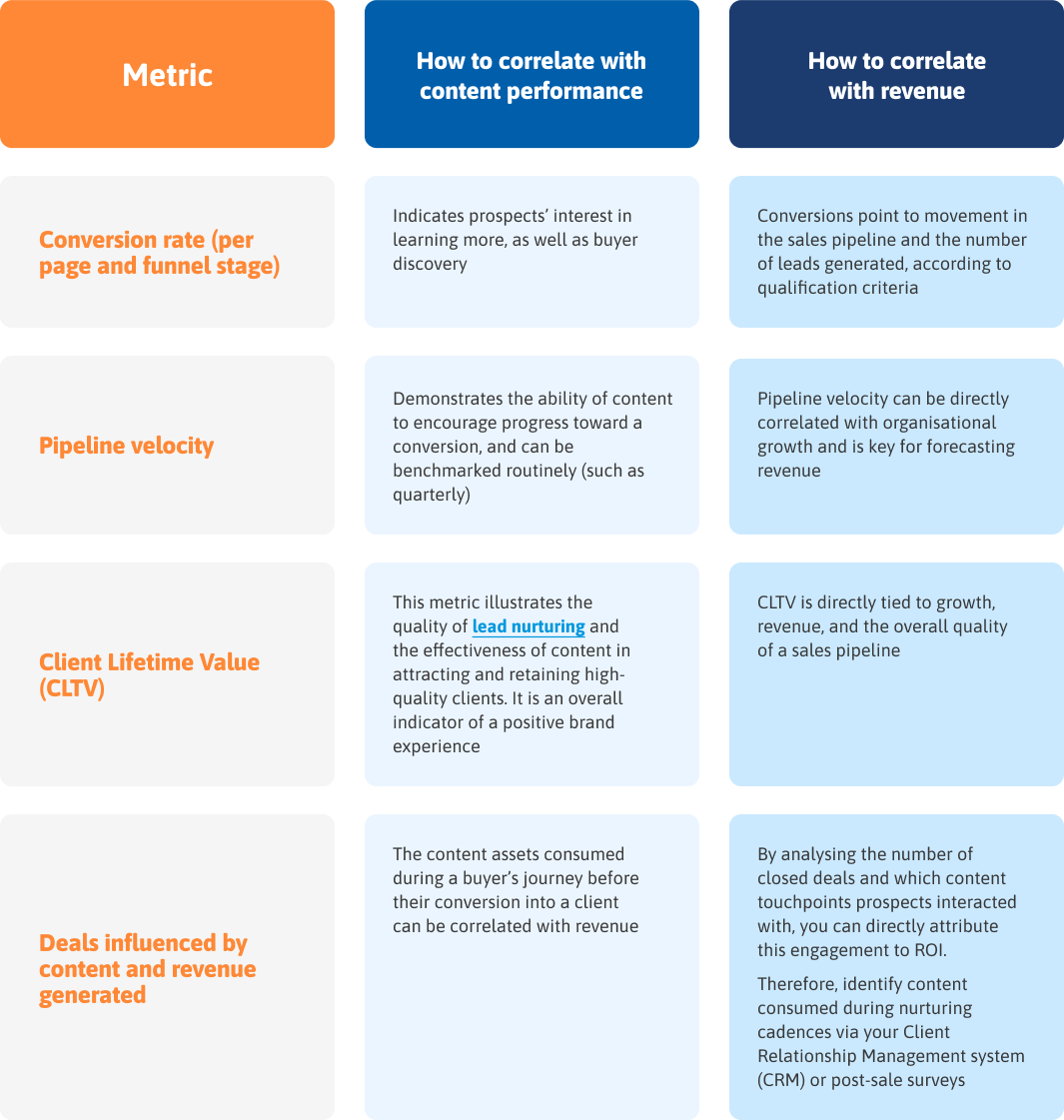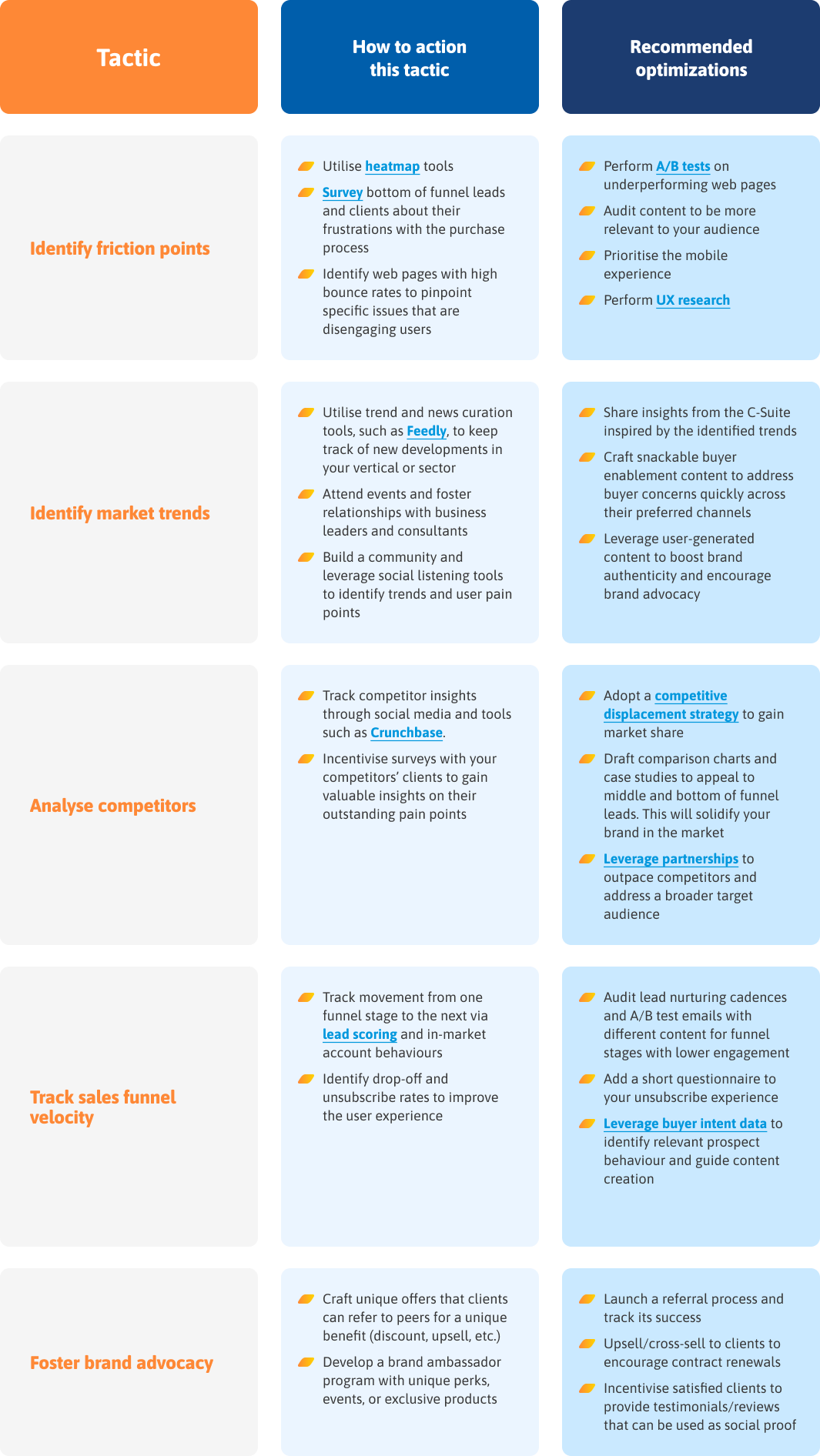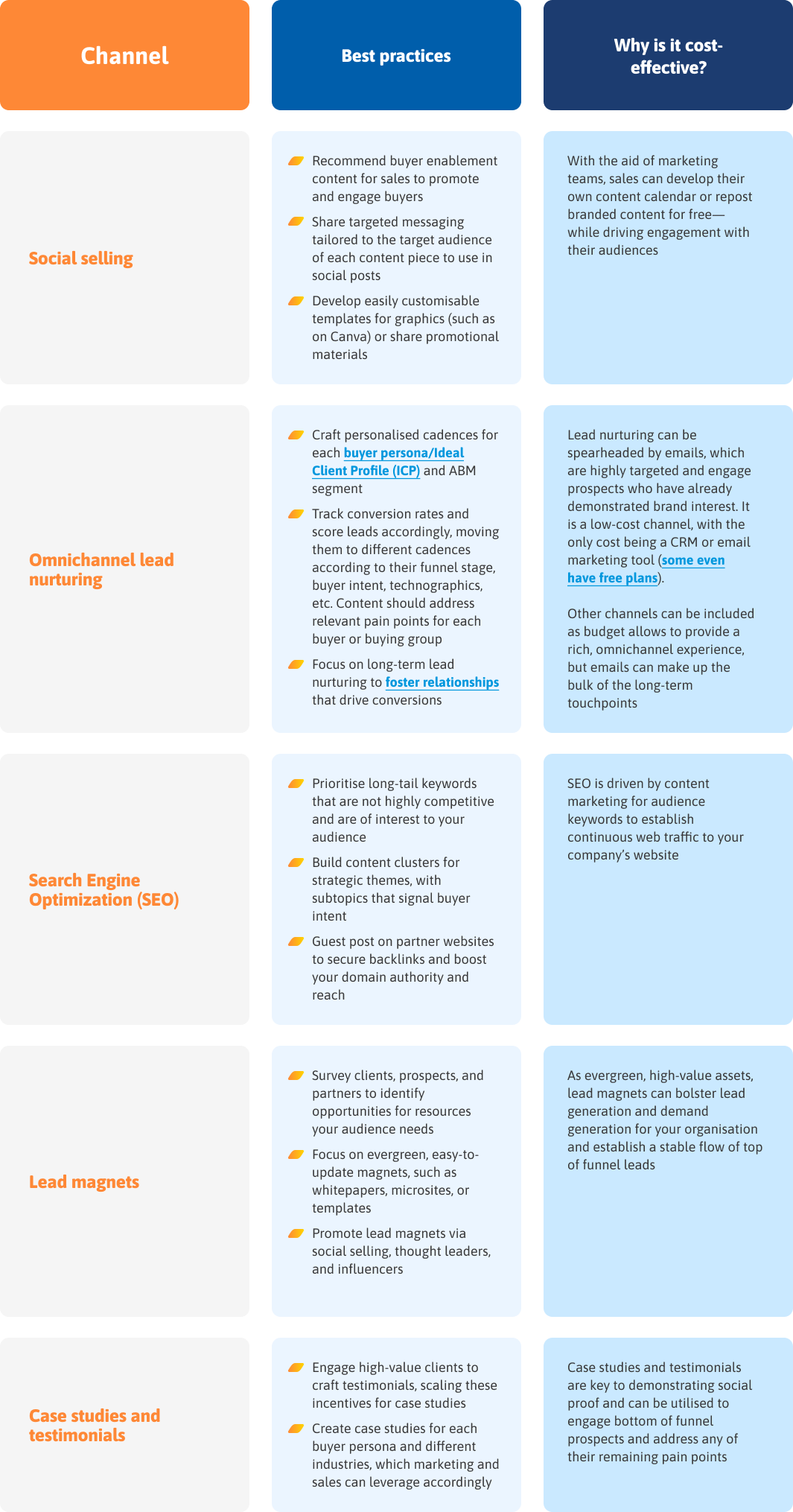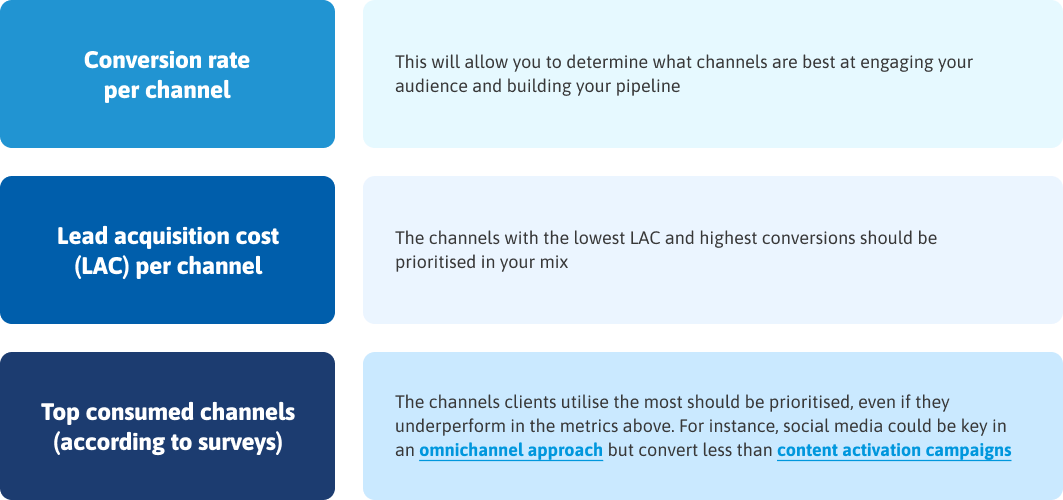Your content should always support your business goals, and adopting a Go-To-Market (GTM) approach is the optimal way to anchor the function of your B2B content marketing and correlate its performance with organisational growth and revenue.
Therefore, after each quarter/semester/year, compile your metrics and compare them with the outcomes achieved to evaluate its effectiveness. Then, determine if GTM goals were met in the same timeframe in prior years, and how content supported those goals.
For example, a GTM goal could be promoting a new product to a key buyer persona. Depending on the success of this initiative and the content performance metrics collected, you can determine how your content strategy supported the results. This can be further attested by checking sales funnel checkpoints and interviewing clients about their content consumption and favourite brand assets.
It is also possible to directly assign specific metrics to GTM goals (depending on the GTM model you are using). This can be straightforward for product-led growth, however, for community and partner-led approaches this may require input from third parties to benchmark performance.
Evaluating the performance of your B2B content marketing strategy is a never-ending process that should be continually optimised to ensure that success is accurately defined and that your content continues to meet organisational goals.

















